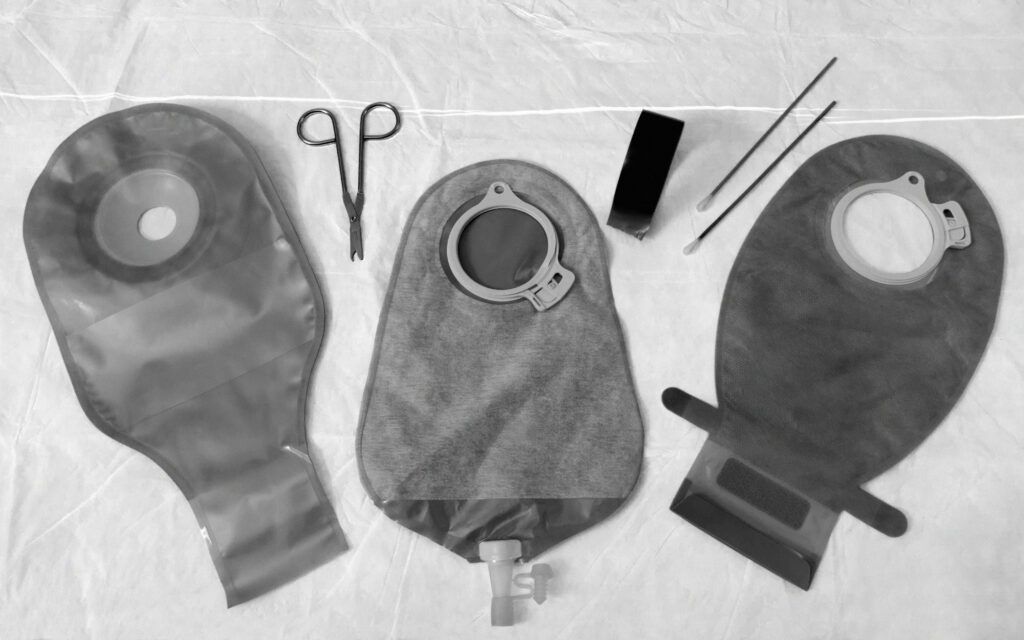The ileostomy bag collects the digestive waste of people who have undergone an ileostomy. Proper skin care and regular bag emptying are essential to prevent complications.
An ileostomy is a relatively common procedure that allows portions of the intestines to heal due to damage caused by certain health conditions, like Crohn’s disease. After undergoing the procedure, the output of the digestive waste starts coming out of an opening in the abdomen and is collected into an ileostomy bag.
This article will review what an ileostomy bag is, how to care for it, and what a person can expect with their recovery.

An ileostomy bag is a pouch attached to the opening in the abdominal wall (or stoma) that doctors create during ileostomy surgery.
Instead of digestive waste leaving the body through the anus, as it usually would, an ileostomy bag collects it. People may have to empty the bag
Learn more about ileostomy outputs and how much is too much.
Taking certain precautions can help to reduce the risk of skin injury and damaging the pouch.
Emptying the pouch
When the bag is about a third to half full, it requires emptying to reduce leaking and prevent bulging under the clothes.
Before reconnecting the bag, people should thoroughly clean and dry the skin around the stoma. Doing both of these things can help reduce the risk of skin infections and irritation.
If a person with an ileostomy bag notices any signs of skin irritation or infection, they must contact a doctor. Depending on the situation, the doctor may prescribe topical or oral medications to help the skin heal and prevent complications.
A person should also change their pouch with a new bag every 2 to 3 days. However, this can vary depending on the waste output and the type of ileostomy bag a person uses. Some people may feel they can use the same pouch for about a week, while others may prefer changing it more frequently.
Wearing loose clothing
When wearing an ileostomy bag, people should avoid wearing tight-fitting garments. This prevents applying extra pressure on the pouch or stoma and reduces the risk of causing discomfort.
Making dietary changes
An individual with an ileostomy bag may also need to make some dietary changes. This may involve eating more bland, low fiber foods. Doctors recommend avoiding foods that can cause diarrhea, gas, or bloating.
People may want to consider consuming smaller meals more often.
People may also want to avoid eating large quantities of food in the evening to prevent bowel movements from the ileostomy during the night.
Having an ileostomy bag itself does not reduce life expectancy. But the underlying reason for needing one can.
A person may need an ileostomy to relieve symptoms or to prevent complications associated with various health conditions.
Some health conditions that
- Crohn’s disease
- ulcerative colitis (UC)
- familial polyposis
- cancer-related problems
- bowel obstruction
- toxic megacolon
- Hirschsprung disease
For some people, ileostomy may improve their quality of life. It may even improve life expectancy by reducing the risk of serious complications that are associated with a lower life expectancy.
Find out the life expectancy for a person with UC.
Here are some common questions about ileostomy and ileostomy bags:
What is the purpose of an ileostomy bag?
The main purpose of an ileostomy bag is to collect the waste product of the digestive system that comes out of the stoma.
Do ileostomy bags smell?
Most ileostomy bags have charcoal filters that help prevent smells.
Can you have an ileostomy and still poop?
Certain certain types of ileostomy bags,
An ileostomy bag is attached to the stoma and collects digestive waste. The stoma produces continuous waste, so a person may have to empty the ileostomy bag multiple times a day to prevent leaking and bag ruptures.
When emptying the bag, a person should always thoroughly clean the skin surrounding the stoma and make sure the skin is completely dry before reattaching the ileostomy bag. This helps prevent skin irritation and infections.
